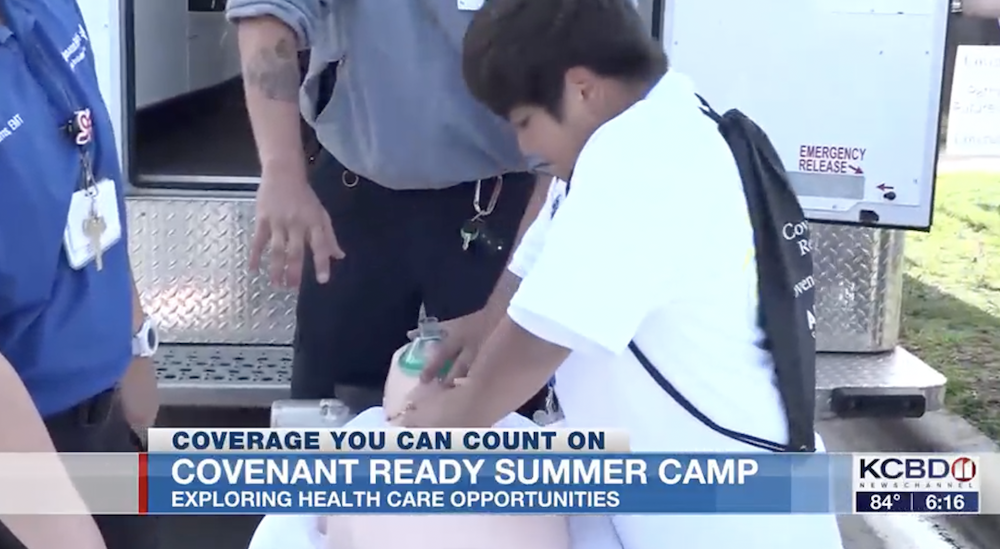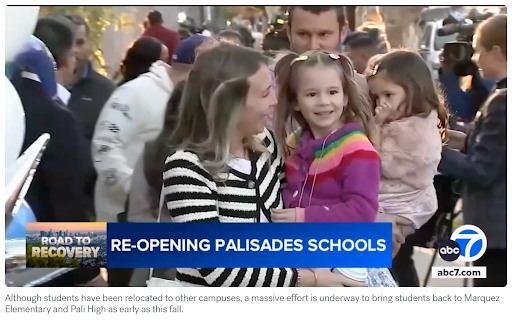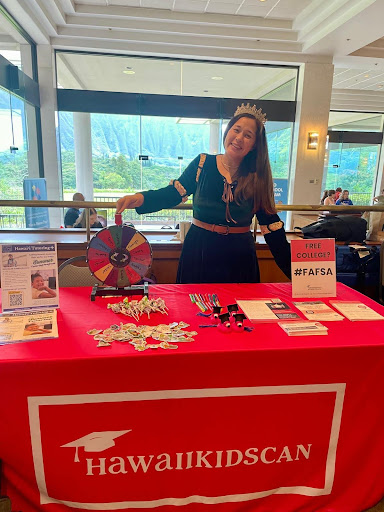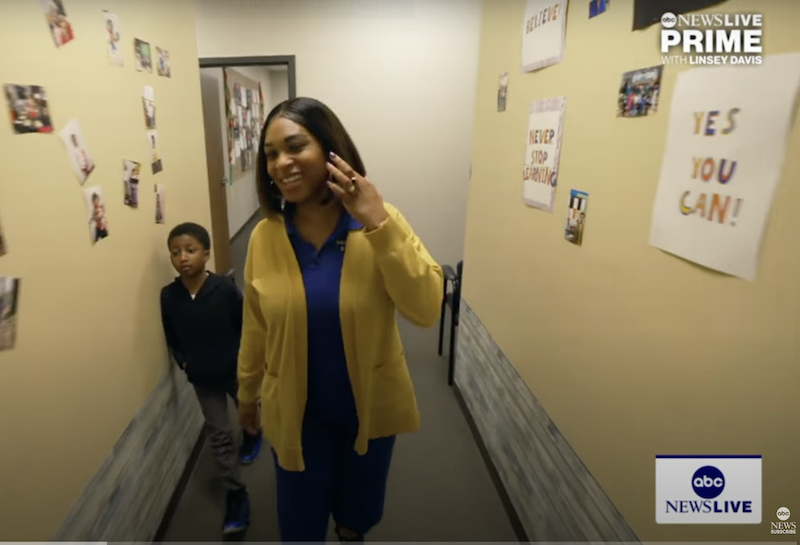Jump to: Top Tasks | From the Field | Key Resources | Moments of Resilience
It is week 184 in our new reality and we are thinking about education technology, big bets and the importance of being guided by evidence of what works.
“In 2014, Zuckerberg and Chan both visited Summit Public Schools, a Bay Area charter school network that had recently integrated technology into the school day. Zuckerberg was impressed and wanted to know how to scale their model nationally,” Matt Barnum writes in a new article for Chalkbeat. In particular, Zuckerberg was drawn to the schedule that had students engaged in computer-based, self-directed learning 16 hours a week. He decided to try and bring this model to every classroom in the country with the goal of securing “transformational improvements in student learning.”
SUBSCRIBE
Yet after hundreds of millions of dollars in investments over nearly a decade, the “Chan Zuckerberg Initiative, the couple’s philanthropic arm, laid off dozens of staff on its education team and announced a shift in strategy,” Barnum reports. “CZI now appears to be reducing its focus on Summit, apparently backing off of hopes that the model would spread to vast swaths of American schools.”
Why? “Summit struggled to produce evidence that its program was leading to the large learning improvement that Zuckerberg had hoped for,” Barnum writes.
There is nothing easy about philanthropic investments in a field as complex as education. Part of the challenge is that taking promising educational programs to scale usually produces results that fall short of their backer’s high expectations. But big bets on technology-driven change in education are particularly hard to do well.
Indeed, while technology has a role to play in the education system of the future, plans that significantly increase the time students spend in front of a computer by reducing their time with a teacher in an in-person learning environment deserve extra scrutiny.
That’s why, in 2016, we partnered with the National Alliance for Public Charter Schools and the National Association of Charter School Authorizers to put a spotlight on the growing evidence that student achievement was significantly lower in virtual charter schools. It is also why throughout the pandemic, we focused attention on the dangers of relying on “zoom school” as a replacement for in-person instruction, particularly for America’s most vulnerable students. Indeed, the evidence keeps piling up of just how costly the loss of an in-person learning environment was during the pandemic. New research by the World Bank’s Harry Anthony Patrinos finds that for every week that schools were closed, learning levels declined by 1% of a standard deviation. That means that, on average, 20 weeks without in-person classes reduced students’ learning outcomes by 0.20 standard deviation or almost one year of schooling.
At the same time, insisting on evidence doesn’t mean giving up on innovation. We should be working to understand the potential of new AI technologies. We should be exploring ways to use connectivity to expand students’ access to courses not offered in their schools. And we should be trying out new types of learning beyond the traditional classroom. But in every step along the way we should insist on measurement before scale.
In our August 2020 policy brief Measure Everything, we led off with a quote from 2019 Nobel Prize winning economists Abhijit Banerjee and Esther Duflo: “Be hard headed about the facts, skeptical of slick answers and magic bullets, modest and honest about what we know and understand, and perhaps most importantly, willing to try ideas and solutions and be wrong, as long as it takes us toward the ultimate goal of building a more humane world.”
That’s a philosophy that will serve us well in our approach to technology and education going forward.
Last week, we looked at a breakthrough win on universal school choice in North Carolina and examined the steps needed to match an expansion of parental choices with better information for families to navigate these options. This week we look at the growing disconnect between increased educator hiring and shrinking student populations, as well as a first look at a new direct aid program in Denver that could serve as a model for communities across the country.
TOP TASKS
Right-size districts before their finances go off a cliff
On April 17, 2020, with the country in the sixth week of the pandemic and following the passage of the first round of federal stimulus, we included this observation from Roll Call in this newsletter: “A budgetary time bomb for public schools is likely to explode long after the pandemic ends.”
 In a recent piece for The 74 Million, school finance expert Chad Aldeman noted that this budgetary bomb is still on track as predicted–and if anything the choices made over the past three years have made it worse. “The latest data suggests that public schools employ more teachers than they did before the pandemic,” Adelman writes, “Thanks in part to strong state budgets and an infusion of federal funds, districts had about 20,000 more teachers in 2021-22 than they did five years earlier (a gain of 0.7%). Meanwhile, those same schools were serving 1.9 million fewer students (a decrease of 4%). Those declines are widespread, with 35 states and more than two-thirds of districts enrolling fewer students than they did five years before.”
In a recent piece for The 74 Million, school finance expert Chad Aldeman noted that this budgetary bomb is still on track as predicted–and if anything the choices made over the past three years have made it worse. “The latest data suggests that public schools employ more teachers than they did before the pandemic,” Adelman writes, “Thanks in part to strong state budgets and an infusion of federal funds, districts had about 20,000 more teachers in 2021-22 than they did five years earlier (a gain of 0.7%). Meanwhile, those same schools were serving 1.9 million fewer students (a decrease of 4%). Those declines are widespread, with 35 states and more than two-thirds of districts enrolling fewer students than they did five years before.”
THE TASK OF THE WEEK IS
Help more blue cities jump on the direct funding bandwagon
While still in its “soft launch” phase ahead of an official launch in January 2024, buzz is already building for an innovative new program that puts education dollars in the hands of parents for use on programs that run outside of the standard school day. And unlike the wave of school choice policies that have emerged in the post-pandemic period in red states (and the recent purple state win in North Carolina), this is happening in the Democratic stronghold of Denver, Colorado, providing a potential model for family-centered policies in left-leaning municipalities.
“Giving money directly to families for extracurriculars, remediation and tutoring is a new experiment here in Denver, though it’s been one we’ve been working on behind the scenes for the past two years,” Nicholas Martinez, executive director of Transform Education Now, tells us. “It’s an opportunity to provide low-income kids the opportunity to engage in the enrichments that are so often afforded only to high-income families. The team at TEN, in partnership with Gary Community Ventures and ReSchool Colorado, are ready to make this dream a reality.”
The new program, MySpark Denver, will provide Denver Public School students who receive free or reduced lunch with a stipend of $1,000 that can be utilized for after-school enrichment, extracurriculars, remediation and tutoring. “We’re hoping for a successful launch and based on the conversations I’ve had with parents, as well as the numbers we saw during the soft launch, I believe demand will be substantial. For our families and parent advocates, it’s hard to overstate how meaningful this program will be in the lives of their children,” Nick reflects. “I can promise you that TEN will be fighting for the program to be expanded and made permanent.”
THE TASK OF THE WEEK IS
FROM THE FIELD
DelawareCAN Executive Director Britney Mumford has launched a plan to map proficiency rates across every school and district, issuing a call in the press for public financing of the project. The idea stemmed from collaboration with NewMexicoKidsCAN, which launched a similar map last year that drove conversations and awareness throughout the Land of Enchantment.
Paula White, executive director of JerseyCAN, continues to make a full-court press on building support among educators and the public for the science of reading. Recently, she connected journalists to North Star Academy in Newark, part of the Uncommon charter school network, to see structured literacy in action.
ConnCAN Interim Executive Director Hamish MacPhail spoke to local supporters in a video message about the team’s plans for the upcoming year while launching a search for the next leader of the organization.
NewMexicoKidsCAN is out with the latest episode of the New Mexico Rising podcast, featuring a candid conversation between Executive Director Amanda Aragon and 50CAN President Derrell Bradford.
Key Resources
Brookings examines urban summer programming like Philadelphia’s Playstreets, finding that the programs have potential to engage students in a way traditional summer school does not.
The Center for American Progress identifies five methods that state governments can use to better support student mental health, including expanding Medicaid-covered mental health services in schools.
Writing in The 74 Million, CRPE’s Bree Dusseault & Justin Lee share new research on how states are grappling with the rise of AI programs like ChatGPT and Khan Academy’s Khanmigo tutoring AI.
A new Ed Working Paper suggests that academic leniency leads to not only inflated GPAs, but also wider achievement gaps and more missed school days by low income students.
Matt Barnum and Kalyn Belsha of Chalkbeat report on a new analysis from Emily Oster of 20 states’ test results, finding that math scores have begun to rebound but ELA is, “all over the map.”
Fordham looks at a new study of CTE program data from Massachusetts, which finds that high performance on licensure tests by CTE instructors correlates with increased life-time earnings for the student participants.
Moment of Resilience

The Executive Directors of the 50CAN network gathered together last week in Phoenix, Arizona to workshop their policy goals for 2024. “The Executive Directors never take for granted the power of gathering with colleagues to collaborate on ideas that will move the work forward,” reflected TennesseeCAN Executive Director Victor Evans. “My fellow EDs have achieved so much success that I relish the opportunity to adjust my own tactics. We’re operating from a unified vision for the future of education–these gatherings are where we underline that vision with the tactics we know work.”







